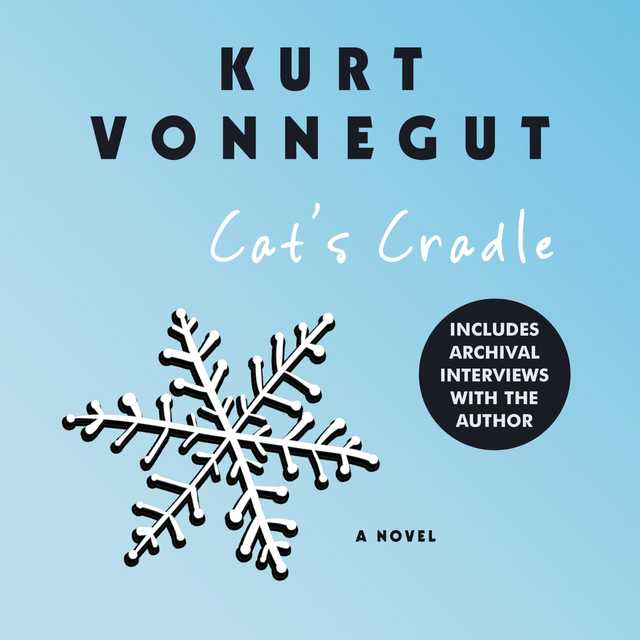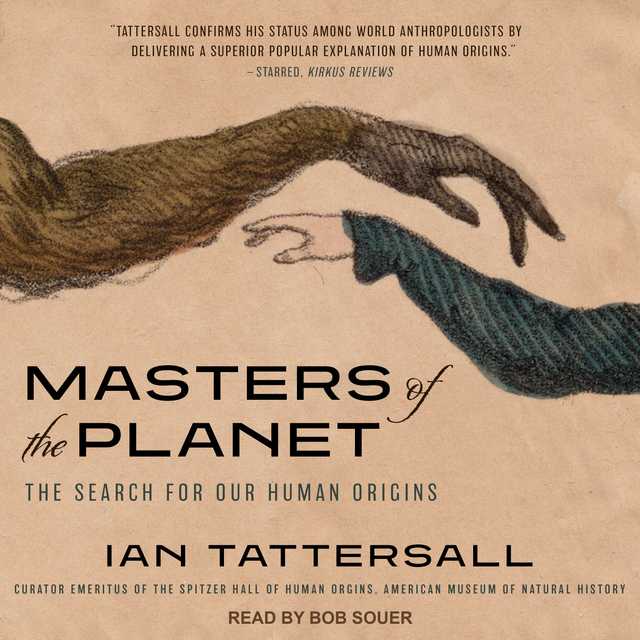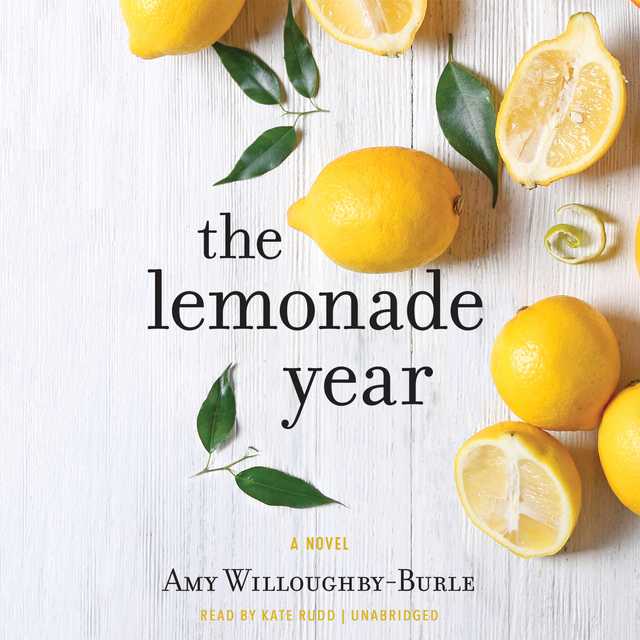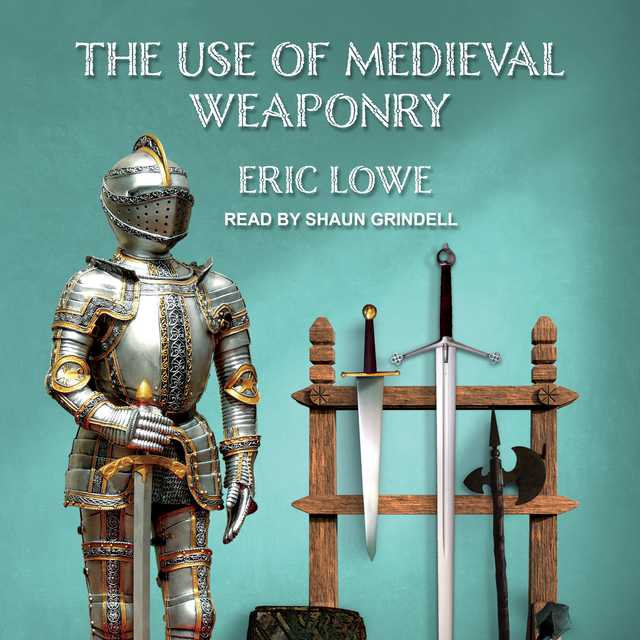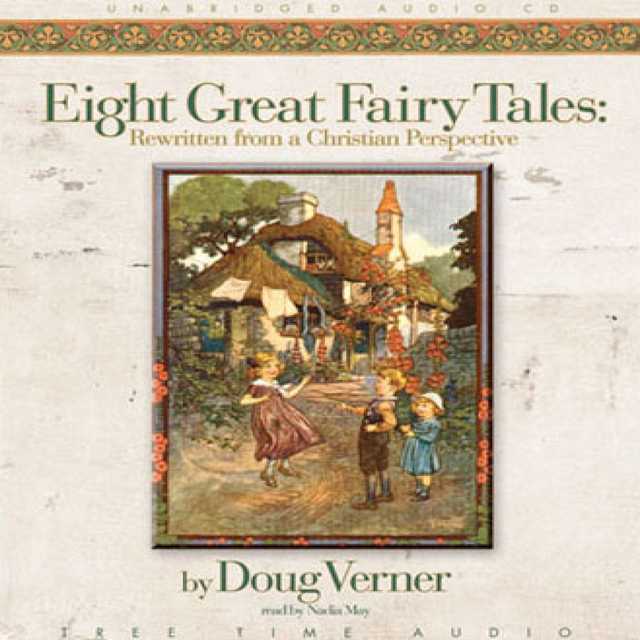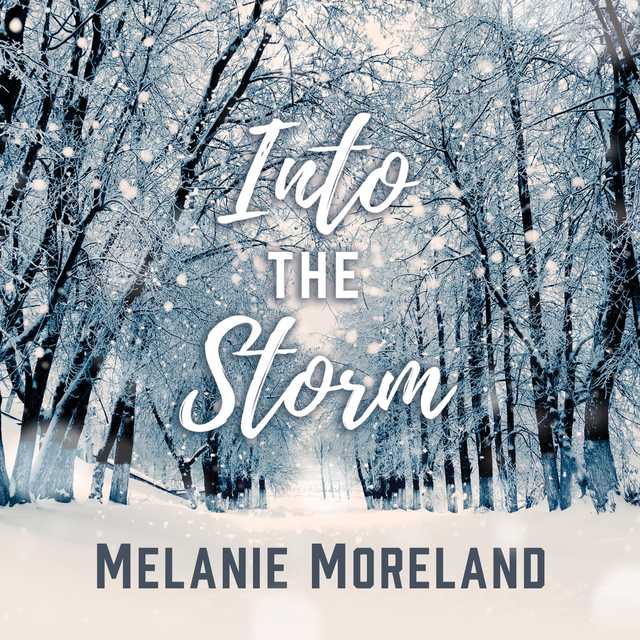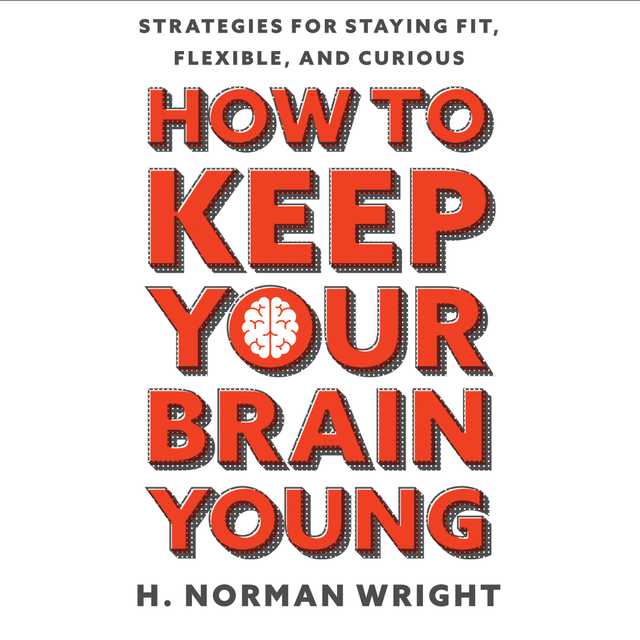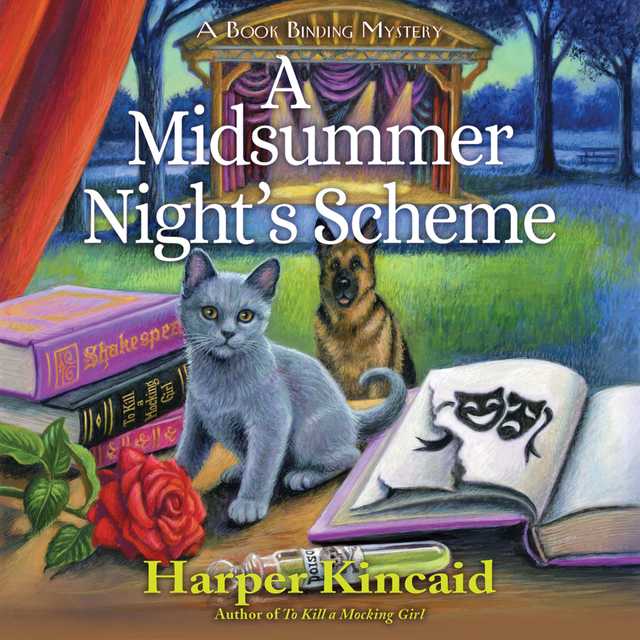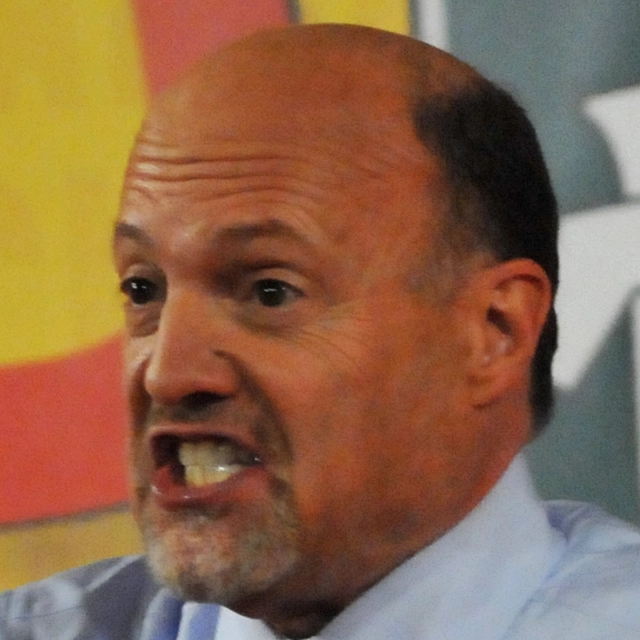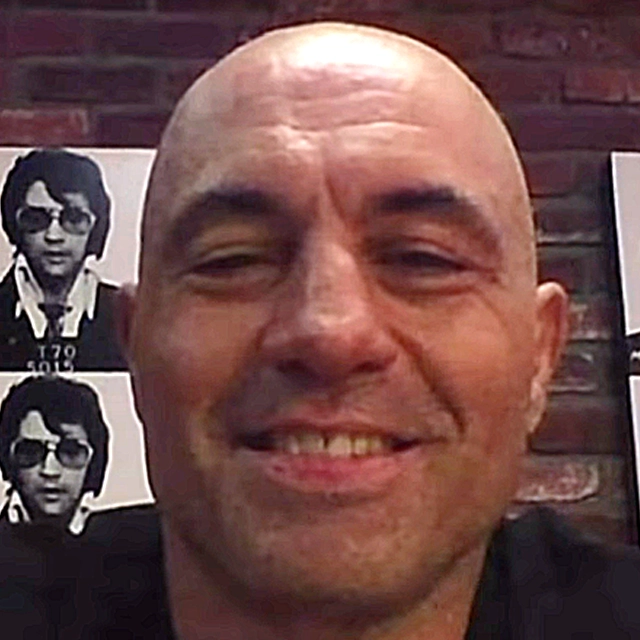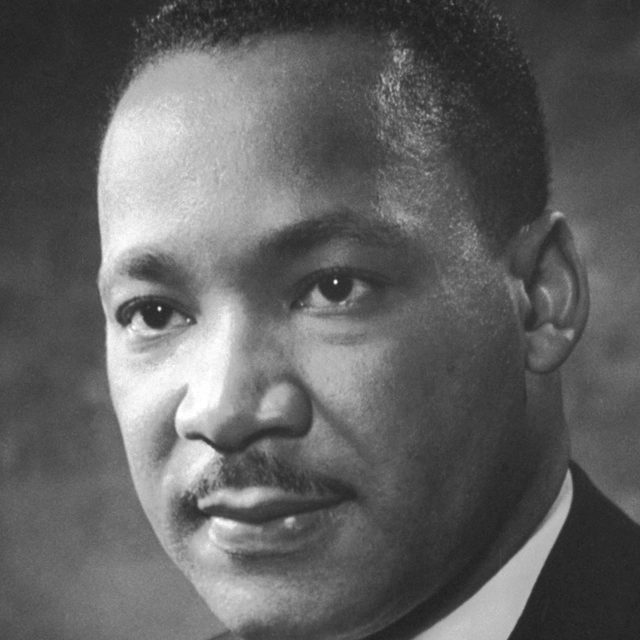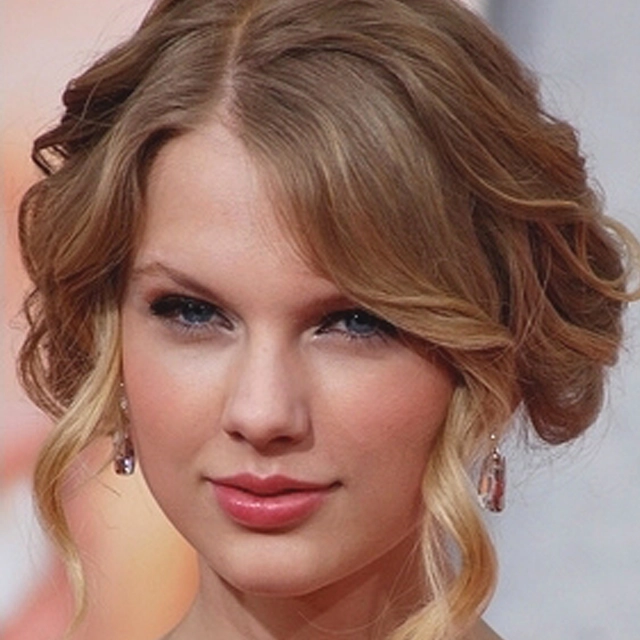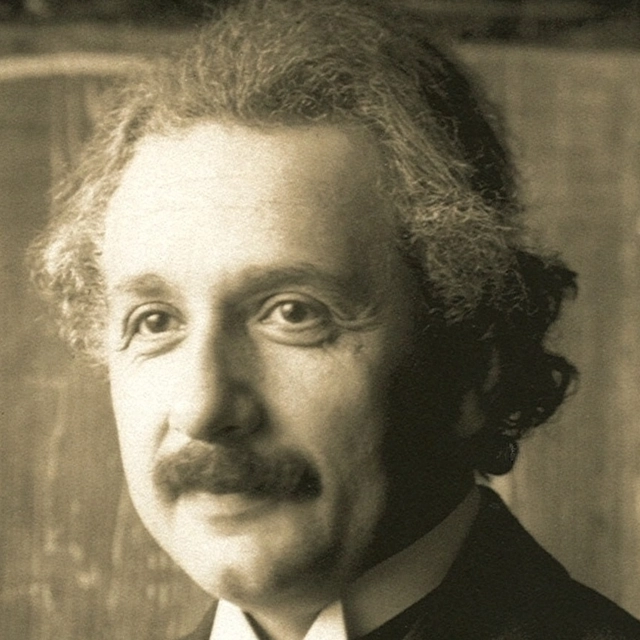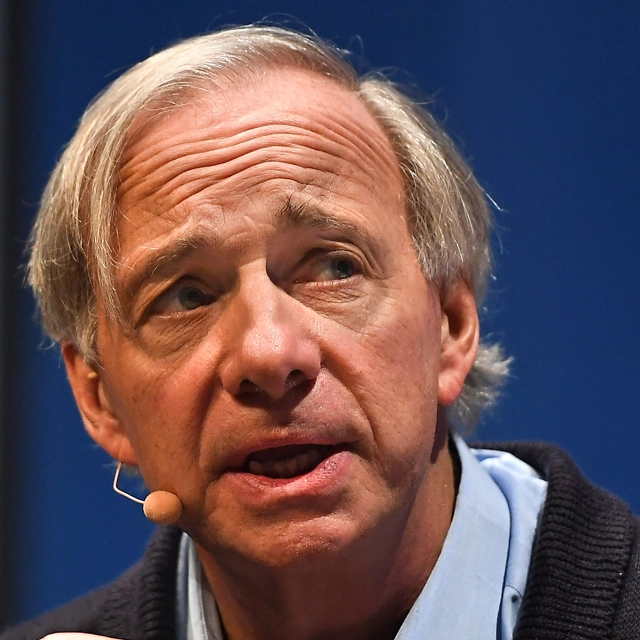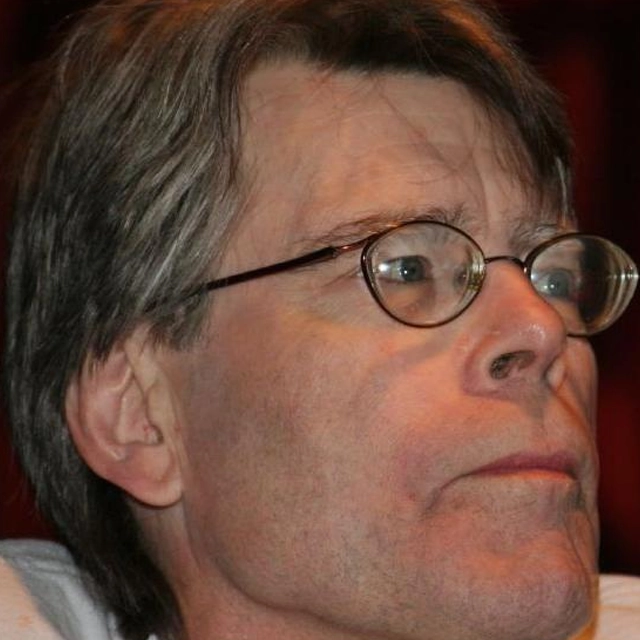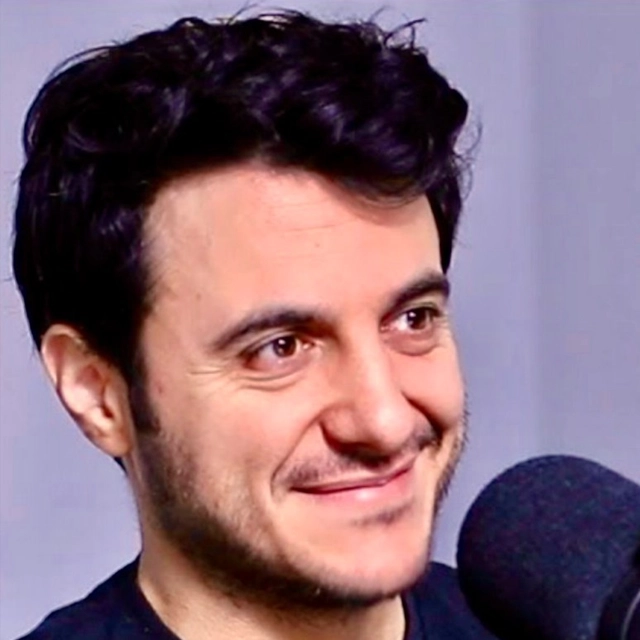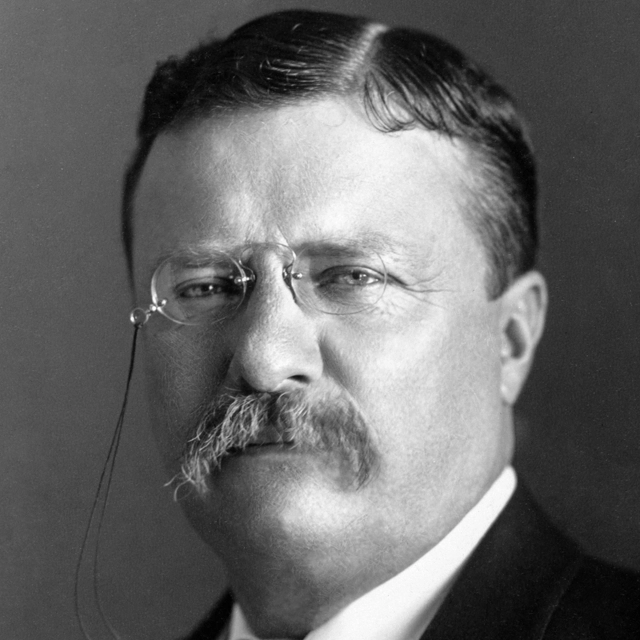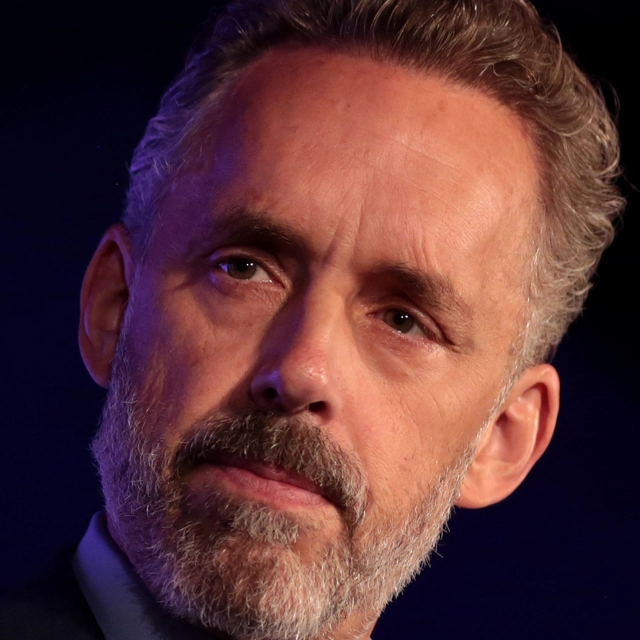Cat’s Cradle Audiobook Summary
Cat’s Cradle is Vonnegut’s satirical commentary on modern man and his madness. An apocalyptic tale of this planet’s ultimate fate, it features a little person as the protagonist; a complete, original theology created by a calypso singer; and a vision of the future that is at once blackly fatalistic and hilariously funny.
Other Top Audiobooks
Cat’s Cradle Audiobook Narrator
Tony Roberts is the narrator of Cat’s Cradle audiobook that was written by Kurt Vonnegut
Tony Roberts is a familiar face from his appearances in numerous Woody Allen and other films, and his starring roles on Broadway in Arsenic and Old Lace, Promises, Promises, The Allergist's Wife, and Xanadu.
About the Author(s) of Cat’s Cradle
Kurt Vonnegut is the author of Cat’s Cradle
More From the Same
- Author : Kurt Vonnegut
- Bagombo Snuff Box
- Timequake
- Armageddon in Retrospect
- Man Without a Country
- Welcome to the Monkey House
- Publisher : HarperAudio
- Abraham
- American Gods [TV Tie-In]
- Dead Ringer
- House of Sand and Fog
- Prey
Cat’s Cradle Full Details
| Narrator | Tony Roberts |
| Length | 7 hours 11 minutes |
| Author | Kurt Vonnegut |
| Publisher | HarperAudio |
| Release date | November 06, 2007 |
| ISBN | 9780061135217 |
Additional info
The publisher of the Cat’s Cradle is HarperAudio. The imprint is HarperAudio. It is supplied by HarperAudio. The ISBN-13 is 9780061135217.
Global Availability
This book is only available in the United States.
Goodreads Reviews
Manny
September 23, 2014
** spoiler alert ** Most people have read Cat's Cradle, so I won't bother to try and hide spoilers. Did you say you hadn't read it? Well, what are you waiting for? This isn't Ulysses, you know, it's short and funny! So, now that it's just us people who know the book, I want to say why I disagree with the criticism you often see, that it's too fragmentary. On the contrary, I think it's very focused, and makes its point with near-perfect economy and wit. There are two obvious themes. One is how the irresponsible use of science to construct ever more deadly weapons is probably going to end up destroying the whole world. The other is a wonderfully crazy take on religion. Each of these themes is satisfying in its own right; what's less clear is that they have anything to do with each other. Let's look at the first theme. Vonnegut's scarily plausible thesis is that it won't be a question of some madman destroying the world on purpose. I love General Jack T. Ripper in Doctor Strangelove, the obvious movie parallel to this book, but I find him somehow less convincing than the series of deranged, helplessly incompetent people in Cat's Cradle. Felix Hoenikker, an obvious Asperger's type, invents Ice-9 in response to a casual question from the US military. His three damaged children get hold of the secret, and exploit it for their own petty ends. Plain, charmless Angela sells it to the Americans in exchange for a playboy husband; Newt, the midget, gives it to the Soviets for a dirty weekend on Cape Cod with a tiny Russian dancer; and, fatally, humorless Franklin sells it to "Papa" Monzano, who makes him a Major General in the largely imaginary army of San Lorenzo, a bankrupt state, I believe, loosely based on Haiti and the Dominican Republic. After that, things just proceed by themselves; nothing works in San Lorenzo, so why would you be able to successfully guard a doomsday device? And, sure enough, it gets used completely by accident.The second theme is presented through Bokononism, a kind of Caribbean version of Christianity, and surely the best fictional religion ever devised. Is there any person here who's never tried boku maru? (Unfortunately, in real life it doesn't have the effect described in the book. Pity). Bokononism is the one thing that makes life worthwhile for Papa's miserable subjects. Officially, the religion is outlawed; in practice, everyone is a Bokononist, which makes their lives rich and meaningful. Everything about the religion turns out to be a lie, and there is even a technical term, foma, for the lies that make up its substance. None the less, Vonnegut succeeds admirably in showing what a good religion it is. The scene where Dr. Schlichter von Koenigswald reads the Bokonist last rites to the dying Papa Monzano is funny, but also moving. I love the line "Nice going, God!", which expresses that particular sentiment with unusual clarity and feeling; it's extremely respectful, while pretending to be the exact opposite.So, what is the connection between the two themes? I think in fact that Vonnegut tells you straight out, but since he does it at the beginning (a favorite ruse of crime writers), you don't quite notice it. He introduces Bokononism, and recounts its creation myth, which is absurd even by the standards of this magic realist genre. Then he cheerfully tells you that Bokonon himself admits that it's all lies. Finally, he comments, in one of his better-known quotes: "Anyone unable to understand how a useful religion can be founded on lies will not understand this book either". As already noted, Bokonon's wise lies in fact make an excellent religion.Here's what I think he means by this. The potential destruction of all life on Earth isn't a very amusing subject. It's so horrifying that you can hardly think about it at all. But Vonnegut manages to present most of the book as a comedy, so that you are able to think about it, which we desperately need to do before it's all too late. By making it funny, he is formally lying to us, but these lies are more useful to us than the truth; we're in pretty much the same situation as the San Lorenzans, who couldn't survive without their mendacious religion. People during the Cold War were, with good reason, scared shitless that the world was going to end soon in a nuclear holocaust. We came terrifyingly close during the Cuba Missile Crisis. (As Christopher Hitchens says, do you remember where you were the day JFK nearly killed all of us?) There were many books and movies intended to help people relate to what was going on. Some of them just presented the threat straight up, in as realistic a way as they could manage: the version I like most is Shute's On the Beach. But I would say that the mirror-reversed ones, like Cat's Cradle and Doctor Strangelove, were better. It's amazing how powerful a weapon humor is; I feel they did more to help persuade us not to blow ourselves up. We need these people badly if we're going to stay sane. Can someone point me to a new Vonnegut, who knows how to make us laugh at global warming and the financial meltdown? I'd rather like to read him.
Danger
March 28, 2011
I've read this book four times. It's better than the Bible, because unlike the Bible, this book knows it's fiction.
Ahmad
August 29, 2021
(Book 427 From 1001 books) - Cat’s Cradle, Kurt VonnegutCat's Cradle is the fourth novel by American writer Kurt Vonnegut, first published in 1963. It explores issues of science, technology, and religion, satirizing the arms race and many other targets along the way. After turning down his original thesis in 1947, the University of Chicago awarded Vonnegut his master's degree in anthropology in 1971 for Cat's Cradle. At the opening of the book, the narrator, an everyman named John (but calling himself Jonah), describes a time when he was planning to write a book about what important Americans did on the day Hiroshima was bombed. While researching this topic, John becomes involved with the children of Felix Hoenikker, a Nobel laureate physicist who helped develop the atomic bomb. John travels to Ilium, New York, to interview the Hoenikker children and others for his book. ...گهواره گربه - کورت ونه گات جونیور، انتشاراتیها (نشر افق، ثالث)؛ تاریخ نخستین خوانش: بیست و دوم ماه می سال 2011میلادیعنوان: گهواره گربه؛ نویسنده: کورت ونه گات جونیور، مترجم: علی اصغر بهرامی؛ تهران، نشر افق، 1383؛ در 406ص؛ چاپ دوم 1386؛ چاپ سوم 1392؛ چاپ چهارم 1394؛ شابک 9789643691615؛ موضوع: داستانهای نویسندگان ایالات متحده آمریکا - سده 20معنوان: گهواره گربه؛ نویسنده: کورت ونه گات، مترجمها: مهتاب کلانتری؛ منصوره وفایی؛ تهران، ثالث، 1383؛ در 375ص؛ شابک9643800385؛ رمان «گهواره گربه»، چهارمین اثر نویسنده ی آمریکایی: «کورت ونه گات» است، که نخستین بار در سال 1963میلادی، چاپ شده است؛ ایشان در این کتاب، در باره ی علم، تکنولوژی، و مذهب، بحث میکنند، و مسابقه ی تسلیحاتی، و بسیاری از مفاهیم جدی دیگر را، به سخره میگیرند؛ عنوان کتاب، از بازی کودکانه ای گرفته شده، که با نخی بازی میکنند؛ که دو سرش گره خورده، و بین انگشتان دو نفر، دست به دست میشود؛ در صفحات نخستین رمان، «فلیکس هوینکر»، مخترع فرضی «بمب اتم» را مییابیم، که درست، در لحظه ی افتادن، یا پرتاب بمب، مشغول همین بازی است؛ «گهواره گربه»، در سال 1964میلادی، کاندیدای دریافت جایزه ی «هوگو»، برای بهترین رمان، بوده استتاریخ بهنگام رسانی 27/07/1399هجری خورشیدی؛ 07/06/1400هجری خورشیدی؛ ا. شربیانی
Vit
July 06, 2020
Progress: scientific revolution, revolution number nine, ice-nine… Science is neutral and it may serve evil as readily as good…After the thing went off, after it was a sure thing that America could wipe out a city with just one bomb, a scientist turned to Father and said, ‘Science has now known sin.’ And do you know what Father said? He said, ‘What is sin?’Some invent powerful explosives and some invent new religions and it is hard to say which invention is more dangerous.Well, when it became evident that no governmental or economic reform was going to make the people much less miserable, the religion became the one real instrument of hope. Truth was the enemy of the people, because the truth was so terrible, so Bokonon made it his business to provide the people with better and better lies.There is a little ugly dystopia hidden within every big beautiful utopia…
mark
June 05, 2012
there are probably as many reviews of Cat's Cradle as there are stars in the sky, so no doubt there's little i can add that's of any value. who cares? i love hearing myself talk, so let's go for it! ..... well, this is harder than i thought. it's as easy as describing why i love my favorite pillow or threadbare t-shirt, or why i like rainy days as much as sunny days. okay, here goes. the inventiveness of Cat's Cradle and its bleak, absurd humor was incredibly eye-opening to me in high school and it practically provided a template for how i looked at things. in college, it was a joy to return to, particularly after the tedious nonsense foisted upon me in various classes (well, in time, i grew to love all the tedious nonsense foisted upon me, but that was years later, and besides the point). after college, it defined the outlook of almost everyone i knew around me, and i remember bothering folks to read it so that they could understand some of my references, or so that they could read their own worldview, in book form. when i said things like "impaled... on a giant hook" or "i want to read your index", folks had no clue about what i was talking about. i guess that's why i eventually stopped saying those phrases.and back to the book. Cat's Cradle: it has warmth and anger and wisdom and an almost naive kind of brashness at times. i love that combo. favorite character: cynical young Philip Castle: do-gooder, sarcastic asshole, painter, owner of a hotel that scorns snobs and is therefore pretty empty. i love you, Philip Castle! my second fictional crush slash look, i see myself! type character. Holden Caulfield came first and Donnie Darko eventually replaced you... but you were the dreamiest.
Leonard
May 31, 2021
Cat’s Cradle (1963) is perhaps less famous than Slaughterhouse-Five (1969). It is also less complex, less pomo in style, less “busy, busy, busy”, as Bokonon would say. In short, less of a cat’s cradle. But there is a certain quality to this book that makes it one of Vonnegut’s most profound and enjoyable novels. For the most part, the plot is fairly linear and arranged in the classical form of a Swiftian-Voltairian fable. It is told by a first-person narrator/writer/protagonist (“Call me Jonah”, cf. Moby-Dick) who is, at the start of the story, doing some research on the day the atomic bomb was dropped on Hiroshima. One thing leading to another, he ends up on a Caribbean island with a group of improbable and bizarre characters... Anyway, to hell with the plot and characters, just read the fucking book!Despite the apparent simplicity of the story, and without drawing too much attention to itself, all the quirks we know and love about Vonnegut’s writing are here: short, fast-paced, scrappy chapters, icy irony and black humour, catchy paragraphs, punchlines, a motley of weird situations, eclectic bits of science and philosophy, a marquetry of dialogues, letters, indexes, poems and calypso songs, spoof excerpts from the utopian Books of Bokonon, metafictional mise en abyme of the book within itself, etc.The themes that form the bedrock of most of Vonnegut’s novels are all here too: human craziness, the belief in pipe dreams (granfalloons in Bokononist parlance), art and religion (happy lies that make life barely bearable), free will and determinism (zah-mah-ki-bo), the absurdity of existence. More importantly, the novel lays out, toward the end, the imagery of apocalyptic destruction (pool-pah) — annihilation falling from the sky, bunkers, mass graves — that harks back to Vonnegut’s personal experience during the carpet bombing of Dresden in February 1945. Famously, the author further developed this atrocious episode in the quasi-autobiographical sections of Slaughterhouse-Five. Which led him to conclude:Perhaps, when we remember wars, we should take off our clothes and paint ourselves blue and go on all fours all day long and grunt like pigs. That would surely be more appropriate than noble oratory and shows of flags and well-oiled guns. (LoA, p. 167)And so, despite Vonnegut’s steadfast vitality and jocularity, Cat’s Cradle is still a story that goes from Hiroshima to Dresden and could indeed have been titled The Day the World Ended. Vonnegut’s novel is, in many ways, a cautionary tale on the menace of nuclear Armageddon — the allusion to the 1962 Cuban missile crisis is only thinly veiled —, and still holds (liquid) water today, as we face an impending climate disaster to boot. In a word: the cradle of humankind is screwed!Side note and final irony: Cat’s Cradle earned its author a master’s degree in anthropology from the University of Chicago.
Steve
February 10, 2017
Another review in the KISS series (Keep It Short, Steve)In Anne Fadiman’s superb book about books called Ex Libris, she divides readers into two categories: those who keep their books in pristine condition (courtly lovers) and those who delight in marginalia (carnal lovers). I started out as one of the former (conditioned, no doubt, by fear of library fines), but became one of the latter. Cat’s Cradle was my first prurient experience, dating back to high school. Part of the reason was that I snagged my copy at a garage sale for a dime – cheap even then. But the real motivation was to highlight this great little rhyme: Tiger got to hunt, bird got to fly;Man got to sit and wonder 'why, why, why?'Tiger got to sleep, bird got to land;Man got to tell himself he understand. That one deserved stars, a yellow marker, and the granddaddy of all desecrations – a dog-ear. I liked how it was framed as such a natural conclusion to the activity of thinking. We tell ourselves that our efforts to understand have paid off. If I’m honest, I don’t recall much of the book’s premise. I remember thinking Vonnegut was one of those cool, sort of counter-cultural writers who wielded his satirical axe well. He may have been a bit darker than Tom Robbins, and less playful with his words, but he was similarly entertaining, incisive and free-wheeling. The book tracks the unusual offspring of the man who invented the A-bomb. They possess a substance called ice-nine that can make water freeze at room temperatures. And you can imagine what might happen if it fell into the wrong hands. The Russians and Americans procured some as did the dictator of a secluded Caribbean island where a religion called Bokononism is practiced despite being illegal and, according to Bokonon himself, based on lies. Still, anything that sells “living by the harmless untruths that make you brave and kind and healthy and happy” will have its appeal.Vonnegut would poke fun at religion, politics, and just about any other human institution where our base natures hide in some gussied up form. And he may well have had a point. If I remember this cautionary tale correctly, a follow-up poem of my own might apply: Monkey got to play, fish got to swim;Man got to risk his life to some psycho’s whim.Monkey got to doze, fish got to coast;Man got to rest assured he won’t become a ghost. And it may give us pause.
s.penkevich
February 15, 2023
‘Live by the harmless untruths that make you brave and kind and healthy and happy,’ Vonnegut writes in Cat’s Cradle, pointing to something fiction is really well suited towards. I mean what is fiction if not an untruth that can help understand truths, especially when the truth is so difficult and often rather frightening. Especially when the truth is that death is coming. The world is a scary place with Death around every corner. Turn on the news, there’s Death waving to you from behind a podium, sitting in a CEO office, riding flood waters down a city street; open your news feed and you’ll find Death romping the four corners of the world and likely find them stirring up an argument in the comments section. That little fucker is everywhere. During the Cold War, people in the US were hyper aware of Death on a mass scale as nuclear proliferation and proxy-wars were always at the back of their minds, which can really send you jittering through life on anxiety. But luckily they had folks like Kurt Vonnegut who pointed at Death and laughed and got everyone to laugh with him. Cat’s Cradle is a marvelous book for laughing in the face of Death, one that still holds up today as science and technology keeps racing towards newer ways to put us all in our graves. This was one of those books that first really opened the doors to literature for me when I was I high school. I mean, I was fairly obsessed with this book for awhile and it sent me down paths to other exciting books. We read it for a class and i was so enthusiastic about it my teacher gifted me a copy of Slaughterhouse-Five which I also loved. So many great minds have elucidated upon this novel so efficiently there’s not much else to say, but I’ve been thinking on this one a lot lately and wanted to share. Vonnegut is a lot of fun and manages to convey pretty heady topics of ethics and humanity in easy to swallow capsules of humor without detracting from the importance of the subjects. He also reminds us to laugh, even at ourselves, and that nothing is so sacrosanct we can’t critique it.‘Anyone unable to understand how useful religion can be founded on lies will not understand this book either.’In the book of Bokonon—the fictional religion in the book— it asks the question ‘What can a Thoughtful Man Hope for Mankind on Earth, Given the Experience of the Past Million Years?’ The answer it gives is simply ‘nothing.’ Which, like, fair. Vonnegut frequently satirizes war and the weapons of destruction we build (there is a brilliant moment in a bomb factory with a banner on the wall talking about peace on earth), and here we once again find humanity creating technology like Ice-Nine for the sake of militarization despite its potential to quite literally end the world. ‘Science has now known sin,’ a scientist says after witnessing the testing of the nuclear bomb, to which Dr. Hoenikker asks ‘what is sin?’ Vonnegut getting all existential here looking at the idea that sin is a moral narrative established by religion, and as we see in Cat’s Cradle, narratives are a way in which we ascribe meaning to life and make sense out of chaos. Which is comforting when everything seems so much bigger and scarier than us.I recently spent a a lot of time reading and thinking about Terror Management Theory and wrote about it pretty extensively as it applies to the novel White Noise, but a lot of that is going on here in Cats Cradle as well. Roughly, being assailed by thoughts of death in situations where we are forced to consider how beyond our control it is rally us towards finding ways in which we feel we have some sense of control or community. In DeLillo he discusses consumerism or fascism in this regard. But we also see how religion is another. What is clever about Bokononism in Vonnegut is that it is expressly fictional—in our world and in the reality of the novel. It was invented to give people something to believe in, to use as a compass to ascribe meaning to suffering and life, and—and this is humorously clever—declared illegal to ensure people will believe in it. ‘Well, when it became evident that no governmental or economic reform was going to make the people much less miserable, the religion became the one real instrument of hope. Truth was the enemy of the people, because the truth was so terrible, so Bokonon made it his business to provide the people with better and better lies.’The banning of Bokononim adds an element of edginess and subversiveness that makes it all the more enticing. Look at how powerful conspiracy theories are, so much of it draws on giving the believer a feeling they have some secret knowledge that makes them better. Have there been any studies over if the teenagers who make knowing underground bands and art into a personality becoming more inclined to conspiracy theories later on? But it also plays into how the world is becoming so miserable they needed people to believe in something, though is believing in a conspiracy theory to avoid reality actually a good thing? And when people start affecting the lives of others based on the beliefs in a system that is an elaborate fiction, does that only add more suffering and problems to a world already wallowing in problems?What is clever about Bokononism is all the in-group language it has, such as karass (a group of people linked in a cosmically significant manner, even when superficial linkages are not evident. Ex Bokononism itself) or sinoookas (the “tendrils” of people’s lives). ‘With emotionally charged buzzwords,’ writes Amanda Montell in her book Cultish: The Language of Fanaticism, ‘[groups] establish an ‘us’ and a ‘them’’ which can ‘be as comforting as a tranquiliser.’ The language makes you an “insider” that can become ‘an addiction to the discourse, to the special feeling of knowing something other people didn’t.’ While she is discussing fascist groups, this isn’t far from how Bokononism probes all sorts of religions and the ways they may have of maintaining their flock and instilling a belief all outside are unsaved or damned. Having the book peppered with the language of Bokononism is a way Vonnegut draws us in almost as an insider too. My favorite of the term, though, is foma, which means a ‘harmless untruth.’ There is something rather meta here, as in context it addresses the way the religion of the novel is a harmless (is it?) untruth that gives meaning to the people’s lives of this island, but it brings me back to the idea of fiction to begin with. Fiction is, well, a fictional story that is geared to have a meaning from the events depicted in it, be it a moral message, a way to move about an idea and learn from it, a criticism of structures around us, etc. Vonnegut is using a foma to address issues of religion, power, weaponization of science and technology, and above all, human nature. And he does so in a way that satisfies with wit, irony and humor that allows us that is comforting and empowering as we laugh in the face of destruction. Which is something we always need and could definitely use lately. I mean, we don’t have Ice Nine putting a snowy end to the world in the dramatic fashion of the novel, but if we can feel comfortable approaching difficult topics, maybe we can be empowered to make change. To laugh at those who stand in the way of improvement, to reduce them to a cartoonish villain because those we feel we can overcome if we hold to love and goodness. Because, as Vonnegut tells us ‘there is love enough in this world for everybody, if people will just look.’
Dave
August 25, 2022
“Live by the harmless untruths that make you brave and kind and healthy and happy.”Vonnegut’s Slaughterhouse Five, one of the great anti-war novels of all time, is based on Vonnegut’s own experience as a soldier during WWII in the bombing and destruction of Dresden. The book is darkly funny, veering into science/speculative fiction, but underneath it all is barely contained rage and despair at the stupidity of the human race, especially with respect to the conduct of war and the destruction of civilians in cities. Cat’s Cradle, his fourth novel, continues Vonnegut’s rage against the war machine, this time focused on Dr. Irving Langmuir, one of the architects of the atomic bombs dropped on Hiroshima and Nagasaki, fictionalized in the guise of Dr Felix Hoenikker, whom Vonnegut has constructing a cat’s cradle when the bomb is actually dropped. Vonnegut met and talked with Langmuir at one time.Here’s how to make a cat’s cradle:https://www.wikihow.com/Play-The-Cat%...I won't include information here on how to make an atomic bomb. We have enough idiots who have these bombs ready to end the human race. And, we already know how to bomb (or not bomb) a nuclear power plant, so no need for that.This book, Cat's Cradle, is actually structured as a kind of elaborate (though seemingly random) cat’s cradle. As Vonnegut observes, it is a cheat: No cat. No cradle. Just a series of exes, a pattern appearing to be beautiful, but ultimately meaningless, absurd, like Vonnegut’s basic philosophy. Senseless acts of beauty, vs. senseless acts of destruction. You make your choice. But if bombs are dropped on cities to win wars, Vonnegut makes clear, life is senseless. Vonnegut's books, he once said, "are essentially mosaics made up of a whole bunch of tiny little chips. . . and each chip is a joke.”The book begins like Moby Dick: Call me Johan. Johan is writing a book about the day the bomb was dropped on Hiroshima. Much of the action takes place on a fictional island, San Lorenzo, with mostly poor people and a dictator. The country follows the Bokoninist religion, one that Vonnegut made up. All religion is absurd to Vonnegut, though one principle of Bokoninism makes sense to him: All religion is s pack of lies. Vonnegut uses this religion in various books, involving wampeters, granfalloons, karasses, stuppas, and so on. The plot is silly, fun, dark, all of that, but one point has to do with man’s relation to technology and science, especially that which loses its connection to people. The threat of nuclear destruction in the Cold War is a major theme. The Cuban Missile Crisis happened in 1962; Vonnegut’s book came out in 1963.“Perhaps, when we remember wars, we should take off our clothes and paint ourselves blue and go on all fours all day long and grunt like pigs. That would surely be more appropriate than noble oratory and shows of flags and well-oiled guns.” Vonnegut may not have been a fan of the national American holiday set on the fourth of July, nor the public misty-eyed singing of "The Battle Hymn of the Republic," with its heroic imagery about the bombs bursting in air, accompanied by fireworks to mimic bombing.One thing that Cat's Cradle looks at is the Books of Bokonin, whose Fourteenth Book answers the question:"What can a Thoughtful Man Hope for Mankind on Earth, Given the Experience of the Past Million Years?" It doesn't take long to read The Fourteenth Book. It consists of that one question and a one-word answer followed by a period. This is the one-word answer: "Nothing.”Johan concludes his writing: “If I were a younger man, I would write a history of human stupidity; and I would climb to the top of Mount McCabe and lie down on my back with my history for a pillow; and I would take from the ground some of the blue-white poison that makes statues of men; and I would make a statue of myself, lying on my back, grinning horribly, and thumbing my nose at You Know Who.”
Chris
April 14, 2008
Nothing in this review is true.As much as I enjoy reading Vonnegut, one of the nagging little doubts I always have is that I'm missing something. That there's a hidden message in there that I'm not picking up on. Or, on the other hand, that I am picking up messages that just aren't there.Which is, perhaps, the point of the whole book.The world is full of lies. Good lies, bad lies and indifferent lies, but lies nonetheless, and we pick and choose the lies that make our lives happiest. The lie that we know more than other people, or that we are chosen by one deity or another. They're all lies, and the acknowledgment of that is.... depressing.So, rather than just write about that, Vonnegut wrapped it in a "religion" known as Bokononism - the indigenous and completely artificial "faith" of the island of San Lorenzo. And in order to tell us about Bokononism, we need a narrator - and a disaster. Which brings us to Ice-Nine.A variant of water ice which is the final creation of the father of the atom bomb - Dr. Felix Hoenikker - Ice-Nine is solid at temperatures up to 45.8°C (114.4°F). A single crystal of Ice-Nine can convert any liquid water it touches, which will in turn convert any other water in contact with that. If Ice-Nine were to come into contact with a natural body of water, the chain reaction would lead to the total freezing of the planet Earth.The narrator's journey to the end of the world is an interesting one, started by a search for the truth and ended with the death of humanity. As, perhaps, all searches for truth must.
Lawyer
June 13, 2013
Cat's Cradle: Vonnegut's String GameCat's Cradle, First Edition,Holt, Rinehart and WinstonPublished in 1963, "Cat's Cradle" is Kurt Vonnegut's fourth novel. I consider it one of the great satirical works of the 20th Century. Often referred to as a modern Mark Twain, Vonnegut's view of American society more fully embraces a society and its group values, while Twain's targets for his biting wit were more specifically aimed, although with the same verve and joy in the revelation of the foibles of life.Kurt Vonnegut circa 1963Placing the central character in a supporting role, Vonnegut opens "Cat's Cradle" with the narrative statement of an otherwise anonymous observer of life. "Call me Jonah," he writes, echoing Melville's opening to Moby Dick, "Call me Ishmael.Jonah, as the biblical character was, would prefer to be a neutral observer of life. Jonah's goal is to write a history of the day America dropped the bombs on Hiroshima and Nagasaki, not what it was like in Hiroshima or Nagasaki, but what it was like to be an American.It's been a tenet of the rules of human behavior that it's easier to drop a bomb on somebody.Paul Tibbets gives a wave from the B-29 he named for his mother."Hey, Mom! You're never gonna guess what I'm about to do." You're not down there to see the damage you did. It's in that dirty, gritty face to face business when you see the face of an enemy disappear in a cloud of red mist, after you've pulled the trigger you may have some problems.What Tibbets and his crew didn't see.To capture the essence of what it was like to be alive on that day, Jonah searches for and finds the children of Felix Hoenekker, a co-inventor of the atomic bomb.Hoenekker has been dead for years. However,his children, Frank, Angela, and Newt are very much alive. Newt, the youngest Hoenekker is a whimsical character, an oddity, not only on the basis of his parentage, but also that he is a midget.Newt offers information that is critical to one of the central themes of "Cat's Cradle." He informs Jonah that he did not ask about the most significant response his father had to the successful test of the atomic bomb. When fellow scientist, a stand in for Robert Oppenheimer,whom Vonnegut does not name, speaks of the sin he and his fellow scientists have created, Professor Hoenekker's response is stunning. "What is a sin?"Robert Oppenheimer, Los Alamos, NM, 1945, quoted from the Bhagava Gita, "Now I am become Death, the destroyer of worlds."During the test, Hoenekker is playing the children's game "Cat's Cradle." Hence, the title, and the degree of Hoenekker's detachment from the consequences of his contribution to the nuclear age.Vonnegut, following his service in World War II, was employed by General Electric. His job was to write about the smartest guys in the room and put a human face on them. The company was known for allowing its scientists free rein in theoretical research. And, remember that wonderful slogan of GE once upon a time. "GE--We bring good things to life!Vonnegut realized that science was capable of wreaking catastrophic results when research led to the development of products capable of being put to destructive use if allowed to fall into the wrong hands. Hoenekker is modeled on a scientist working for GE at the time Vonnegut was earning his paycheck there. In fact, the man, who shall remain nameless here, joked about creating the very substance which would be the genie let out of the bottle in "Cat's Cradle."Not only did Hoenekker help build the atomic bomb, it seems he developed a substance Ice-9. For Hoenekker it was an amusement resulting from an exercise of the intellect. However, Ice-9, if allowed to come into contact with moisture of any sort, turned any object into solid ice. The implications are obvious.Jonah accompanies Angela and Newt Hoenekker to the Island of San Lorenzo. Oldest brother, Frank is the small country's Major General, serving dictatorial leader Papa Monzano. Frank is next in line to become President of the Island. Monzano is quite ill.Throughout the novel, expounding on the indifference towards the actual results of scientific results, Jonah learns that each Hoenekker heir carries a piece of the deadly Ice-9.Possibly good might triumph over evil. Perhaps some divine intervention might prevent the release of this deadly substance. Where is God when life hangs in the balance?Why, God is nowhere to be found. Vonnegut's expressions of his opinion of religion have changed throughout his life. He has gone from believer, to agnostic, to atheist, depending which interview you read and the mood in which Vonnegut was found by the particular interviewer at the time.But in "Cat's Cradle," religion is represented by a mischievous character named Bokonon who turns religion on its head. Bokonon doesn't hesitate to include in his teachings that all religions are lies.However, Vonnegut does not allow Bokonon to leave the matter as simply as that. The question is decidedly more complex. It is not that God does not exist, he is merely indifferent. God paid his dues. He made man out of mud, gave him a planet with everything he needed in it. A little worship would be nice, but, hey! Job's done. Time to retire. You're on your own.Perhaps that is Vonnegut's most terrifying premise. Who needs God, when Man is perfectly capable of making an absolute mess out of a world that was working just fine when Man was given it?The government of San Lorenzo is ostensibly Christian in its religious belief. The practice of Bokonism is an offense punishable by death. The implement of execution is called the Hook. You get caught practicing Bokonism, you get the Hook. Papa Monzano has made it clear, the HOOK is especially reserved for the man himself, Bokonon.Papa Monzano turns a blind eye to the fact that all San Lorenzoans practice Bokonism. The Book Of Bokonon may not be printed or published. However, those books are everywhere, carefully copied down by hand. Each book is a personal treasure of the owner. The Book Of Bokanon is against the law for it contains the most basic truths of life. In summary, don't take anything seriously, because at it's most basic level the reason behind a social convention is ridiculous.But it's a joke. One huge Cosmic Joke. Bokanon, the God of San Lorenzo is off the Hook. Always.Only Man ever ends up on the HOOK. No God or Devil is necessary to hang him there. Left to our own devises, we're perfectly capable of hanging ourselves.On San Lorenzo, or anywhere else, there's no need for a sermon of the likes of "Sinner's in the Hands of an Angry God." Neither, would it be necessary for Uncle Screwtape to instruct Nephew Wormwood on the finer arts of temptation in obtaining the souls of men. Jonathan Edwards and C.S. Lewis may be on a library shelf, but they aren't required reading.Those guys, the scientists? Aren't they the whiz kids we really turn to when we're looking for a better life? Maybe they are the new Man made Gods. Vonnegut doesn't condemn science, or religion, or government, although his depiction of those entities are wickedly presented in satirical fashion. This is a very cautionary tale that reminds humanity to be careful of what it wishes for--that's the message, at least for me.I first read "Cat's Cradle" as a very young man. I found everything in it profoundly hilarious. In "Cat's Cradle" I found a way to reinforce my rebellious beliefs against practically everything, remarkably reinforced by a writer who was almost as smart as I was. As Mark Twain said about his father, when Twain was 15, he thought his father was the dumbest man he'd ever known. When Twain was 20, he was amazed at how much the old man had learned.My first copy of "Cat's Cradle"Yesterday, a friend told me "Cat's Cradle" has become her daughter's favorite book. She just celebrated her Sweet 16. I'd love to be around to get her take on it when she's 59 going on 60, as I am. I probably won't be around to find that out. So it goes.Update, June 13, 2013: Cat's Cradle has been chosen as a group read by goodreads group "Literary Exploration" for its July read.
Most Popular Audiobooks
Frequently asked questions
Listening to audiobooks not only easy, it is also very convenient. You can listen to audiobooks on almost every device. From your laptop to your smart phone or even a smart speaker like Apple HomePod or even Alexa. Here’s how you can get started listening to audiobooks.
- 1. Download your favorite audiobook app such as Speechify.
- 2. Sign up for an account.
- 3. Browse the library for the best audiobooks and select the first one for free
- 4. Download the audiobook file to your device
- 5. Open the Speechify audiobook app and select the audiobook you want to listen to.
- 6. Adjust the playback speed and other settings to your preference.
- 7. Press play and enjoy!
While you can listen to the bestsellers on almost any device, and preferences may vary, generally smart phones are offer the most convenience factor. You could be working out, grocery shopping, or even watching your dog in the dog park on a Saturday morning.
However, most audiobook apps work across multiple devices so you can pick up that riveting new Stephen King book you started at the dog park, back on your laptop when you get back home.
Speechify is one of the best apps for audiobooks. The pricing structure is the most competitive in the market and the app is easy to use. It features the best sellers and award winning authors. Listen to your favorite books or discover new ones and listen to real voice actors read to you. Getting started is easy, the first book is free.
Research showcasing the brain health benefits of reading on a regular basis is wide-ranging and undeniable. However, research comparing the benefits of reading vs listening is much more sparse. According to professor of psychology and author Dr. Kristen Willeumier, though, there is good reason to believe that the reading experience provided by audiobooks offers many of the same brain benefits as reading a physical book.
Audiobooks are recordings of books that are read aloud by a professional voice actor. The recordings are typically available for purchase and download in digital formats such as MP3, WMA, or AAC. They can also be streamed from online services like Speechify, Audible, AppleBooks, or Spotify.
You simply download the app onto your smart phone, create your account, and in Speechify, you can choose your first book, from our vast library of best-sellers and classics, to read for free.
Audiobooks, like real books can add up over time. Here’s where you can listen to audiobooks for free. Speechify let’s you read your first best seller for free. Apart from that, we have a vast selection of free audiobooks that you can enjoy. Get the same rich experience no matter if the book was free or not.
It depends. Yes, there are free audiobooks and paid audiobooks. Speechify offers a blend of both!
It varies. The easiest way depends on a few things. The app and service you use, which device, and platform. Speechify is the easiest way to listen to audiobooks. Downloading the app is quick. It is not a large app and does not eat up space on your iPhone or Android device.
Listening to audiobooks on your smart phone, with Speechify, is the easiest way to listen to audiobooks.

